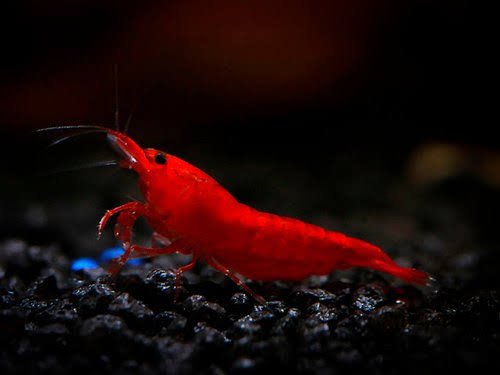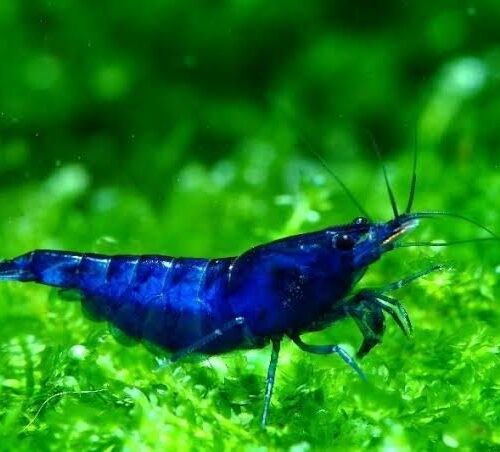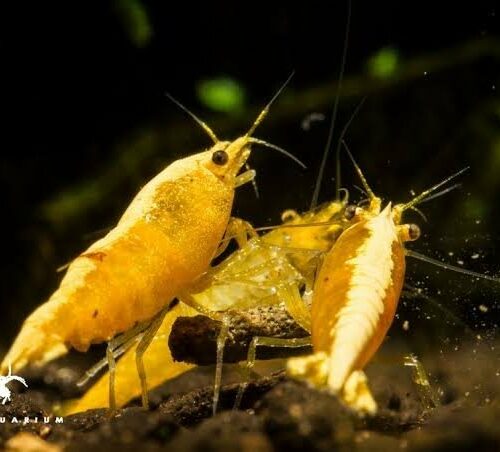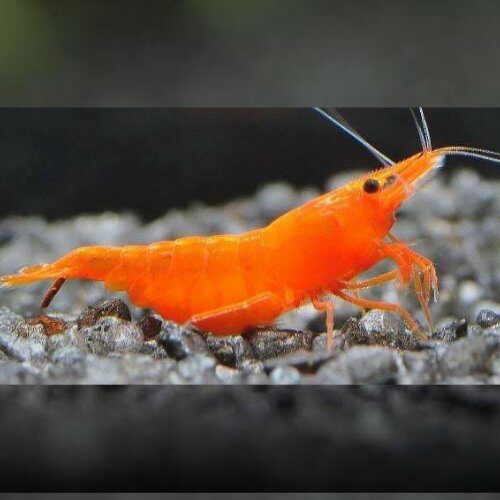Shrimps
Crustaceans known as “shrimps” typically have elongated bodies and engage in swimming as their primary mode of locomotion. These crustaceans belong to the orders Caridea and Dendrobranchiata of the decapod order; however, the term “shrimp” is also used to refer to crustaceans that do not belong to this order.
Some classifications might be narrowed down to include just Caridea, only the more specialised species in each group, or only the marine species. In the context of a more inclusive meaning, the term “prawn” may be used interchangeably with “shrimp.” Both terms refer to swimming crustaceans with stalk-like eyes, long, thin muscular tails (abdomens), long whiskers (antennae), and slender legs. It is common practise to refer to as a shrimp any little crustacean that resembles a shrimp. They propel themselves forward by paddling with swimmerets located on the bottom of their abdomens. However, their escape reaction is often many flicks with the tail, which cause them to move extremely swiftly in the opposite direction. The walking legs of crabs, lobsters, and shrimp are far more robust than the legs of shrimp, which are much more delicate and are largely used for perching.
Shrimp are found in many places and in large numbers. There are an incredible number of species that have evolved to live in a variety of environments. In the majority of coastlines and estuaries, as well as in rivers and lakes, you may find them feeding close to the bottom of the water. Some marine life may lift itself off the bottom and dive down into the silt when it needs to get away from a predator. They may survive anywhere from one to seven years on average. Even though they often congregate in enormous groups during the breeding season, shrimp are mostly solitary creatures.
They are an essential component of the food chain and a crucial source of nutrition for bigger species such as whales, fish, and everything in between. It is common practise to catch and raise shrimp specifically for the purpose of eating their meaty tails, which may be found on many species of shrimp. The commercial shrimp business generates an annual revenue of 50 billion dollars, and in 2010, the total commercial output of shrimp was over 7 million tonnes. Commercial shrimp species are responsible for this revenue. During the 1980s, shrimp farming became increasingly common, notably in China. By 2007, the harvest from shrimp farms had surpassed the catch of wild shrimp for the first time. When shrimp are taken from the wild, there is a major risk of causing an excessive amount of bycatch, and when estuaries are utilised to support shrimp farming, there is a risk of causing pollution harm to the estuaries. Some shrimp species may grow to lengths of over 25 centimetres, contrary to the common perception that shrimp are only approximately 2 centimetres (0.79 in) long (9.8 in). Larger shrimp are more likely to be targeted economically, and they are often referred to as prawns, especially in countries that were once a part of the Commonwealth of Nations and in former British colonies.
-
Shrimps
Amano Shrimp(1 pcs)
Original price was: ₹300.00.₹180.00Current price is: ₹180.00. Add to cartAlgae Eating Shrimp
-
Shrimps
Bloody Mary Shrimp(1 pair)
Original price was: ₹230.00.₹199.00Current price is: ₹199.00. Add to cartHighly Stable blood Colour Red Neocardina Shrimp(Freshwater Shrimp)
-
Shrimps
Blue Velvet Shrimp (1 pair)
Original price was: ₹250.00.₹199.00Current price is: ₹199.00. Add to cartNeocardina shrimp(Fresh water shrimp)
-
Shrimps
Cherry Red Shrimp(1 pair)
₹80.00 Add to cartCherry red is cherry coloured Neocardina Shrimp
-
Shrimps
Choco Black Shrimp (1 pair)
Original price was: ₹180.00.₹120.00Current price is: ₹120.00. Add to cartNeocardina shrimp(Fresh water shrimp)
-
Shrimps
Electric Blue Shrimp(1 pair)
Original price was: ₹180.00.₹160.00Current price is: ₹160.00. Add to cartMost popular and Demanded Blue Coloured Neocardina Shrimp
-
Shrimps
Golden Yellow Back Shrimp(1 pa…
Original price was: ₹210.00.₹179.00Current price is: ₹179.00. Add to cartGolden yellow line on body of the shrimp and Neocardina shrimp
-
Shrimps
Light Green Shrimp(1 pair)
Original price was: ₹80.00.₹50.00Current price is: ₹50.00. Add to cartLight Green Coloured Neocardina Shrimp
-
Shrimps
Orange Shrimp(1 pair)
Original price was: ₹140.00.₹99.00Current price is: ₹99.00. Add to cartOrange Coloured Neocardina Shrimp
-
Living Beings
Rose Black Shrimp(1 pair)
Original price was: ₹250.00.₹199.00Current price is: ₹199.00. Add to cartStable Black Neocardina Shrimp(freshwater shrimp)
-
Living Beings
Sakura Orange (1 pair)
Original price was: ₹150.00.₹95.00Current price is: ₹95.00. Add to cartSakura Orange is Saturated Orange colour and Demanded Neocardina Shrimp
-
Living Beings
Sakura Orange(1 pair)
Original price was: ₹99.00.₹88.00Current price is: ₹88.00. Add to cart❤️Top Grade Shrimp❤️
-
Living Beings
Sakura Red Shrimp (1 pair)
Original price was: ₹150.00.₹80.00Current price is: ₹80.00. Add to cartPopular and Highly Stable Red Colour Neocardina Shrimp(Freshwater shrimp)
-
Combo Packs
Shrimp Combo 1 pair each(Blood…
Original price was: ₹899.00.₹549.00Current price is: ₹549.00. Add to cartCombo Pack of bloody mary, Sakura Orange, Golden Yellow Back, Blue Velvet of 1 pair each
-
Combo Packs
Shrimp Combo 1 pair each(Elect…
Original price was: ₹899.00.₹449.00Current price is: ₹449.00. Add to cartShrimp Combo Pack of 4 variety Shrimp
-
Living Beings
Snowball Shrimp(1 pair)
Original price was: ₹210.00.₹170.00Current price is: ₹170.00. Add to cartsnowball is Germany for its white coloration
-
Shrimps
Yellow Shrimp (1 pair)
Original price was: ₹160.00.₹80.00Current price is: ₹80.00. Add to cartYellow Shrimp is yellow Colour Neocardina Shrimp
-
Shrimps
10pcs shrimp Combo(5pcs Bloody…
Original price was: ₹999.00.₹700.00Current price is: ₹700.00. Add to carttop Combo pack
-
Shrimps
10 pcs Shrimp Combo(5 pcs Bloo…
Original price was: ₹1,299.00.₹700.00Current price is: ₹700.00. Add to cartTop Grade Shrimp Combo of Bloody mary and golden yellow back
-
Shrimps
10 pcs Golden Yellow Back Shri…
Original price was: ₹1,299.00.₹899.00Current price is: ₹899.00. Add to cart10 pcs Yellow Shrimp with Golden Line on Back
-
Shrimps
10 pcs Bloody Mary Shrimp
Original price was: ₹1,299.00.₹899.00Current price is: ₹899.00. Add to cart10 pcs Dark Blood Coloured Pure Bloody mary Shrimp
-
Shrimps
10 Pcs Blue Velvet Shrimp ( 5 …
Original price was: ₹1,299.00.₹899.00Current price is: ₹899.00. Add to cart10 Pcs Stable Blue Coloured Shrimp
-
Shrimps
10 Pcs Sakura Orange Shrimp
Original price was: ₹899.00.₹699.00Current price is: ₹699.00. Add to cart10 Pcs Saturated Orange Coloured Shrimp
-
Shrimps
10 pcs shrimp combo(5 pcs Bloo…
Original price was: ₹999.00.₹699.00Current price is: ₹699.00. Add to cartTop quality Shrimp
Crustaceans known as “shrimp” typically have elongated bodies and engage in swimming as their primary mode of locomotion. These crustaceans belong to the orders Caridea and Dendrobranchiata of the decapod order; however, the term “shrimp” is also used to refer to crustaceans that do not belong to this order.
Some classifications might be narrowed down to include just Caridea, only the more specialised species in each group, or only the marine species. In the context of a more inclusive meaning, the term “prawn” may be used interchangeably with “shrimp.” Both terms refer to swimming crustaceans with stalk-like eyes, long, thin muscular tails (abdomens), long whiskers (antennae), and slender legs. It is common practise to refer to as a shrimp any little crustacean that resembles a shrimp. They propel themselves forward by paddling with swimmerets located on the bottom of their abdomens. However, their escape reaction is often many flicks with the tail, which cause them to move extremely swiftly in the opposite direction. The walking legs of crabs, lobsters, and shrimp are far more robust than the legs of shrimp, which are much more delicate and are largely used for perching.
Shrimp are found in many places and in large numbers. There are an incredible number of species that have evolved to live in a variety of environments. In the majority of coastlines and estuaries, as well as in rivers and lakes, you may find them feeding close to the bottom of the water. Some marine life may lift itself off the bottom and dive down into the silt when it needs to get away from a predator. They may survive anywhere from one to seven years on average. Even though they often congregate in enormous groups during the breeding season, shrimp are mostly solitary creatures.
They are an essential component of the food chain and a crucial source of nutrition for bigger species such as whales, fish, and everything in between. It is common practise to catch and raise shrimp specifically for the purpose of eating their meaty tails, which may be found on many species of shrimp. The commercial shrimp business generates an annual revenue of 50 billion dollars, and in 2010, the total commercial output of shrimp was over 7 million tonnes. Commercial shrimp species are responsible for this revenue. During the 1980s, shrimp farming became increasingly common, notably in China. By 2007, the harvest from shrimp farms had surpassed the catch of wild shrimp for the first time. When shrimp are taken from the wild, there is a major risk of causing an excessive amount of bycatch, and when estuaries are utilised to support shrimp farming, there is a risk of causing pollution harm to the estuaries. Some shrimp species may grow to lengths of over 25 centimetres, contrary to the common perception that shrimp are only approximately 2 centimetres (0.79 in) long (9.8 in). Larger shrimp are more likely to be targeted economically, and they are often referred to as prawns, especially in countries that were once a part of the Commonwealth of Nations and in former British colonies.

























